Today we pushed the Integra out of the corner of the workshop and made a start on getting it track ready. Since it’s been more than 5 years since it’s last outing it definitely needs some love and attention. Like all the cars at Honed we’re planning geometry tweaks to make it perform at its best, focusing on bumpsteer since the DC5 is well known to have shortcomings in this area.
With the car up on stands we set to work measuring to get a baseline to see what could be improved. The DC5 suspension gets plenty of harsh criticism, with suspension geometry being blamed for ill handling of all sorts, probably unfairly in many cases. Rather than listen to Internet hearsay though we decided to confirm what was really going on.
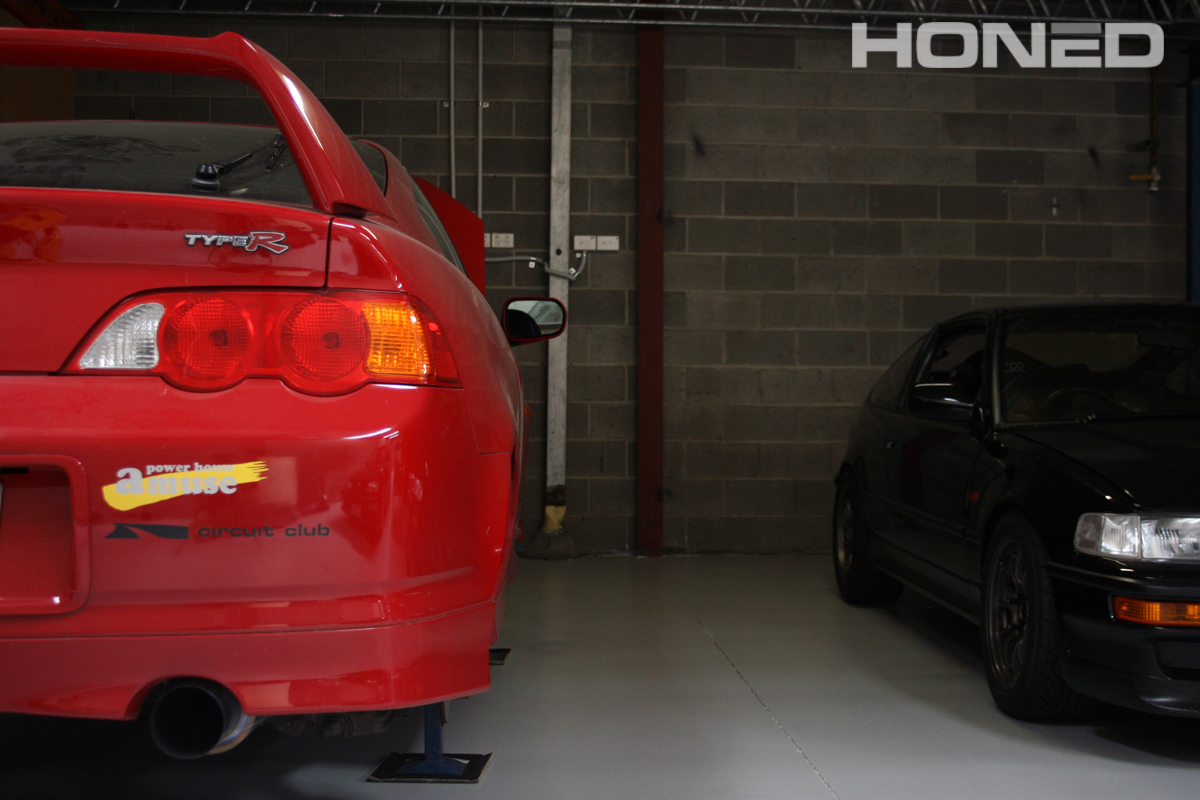
We began with the rear bump steer and camber:
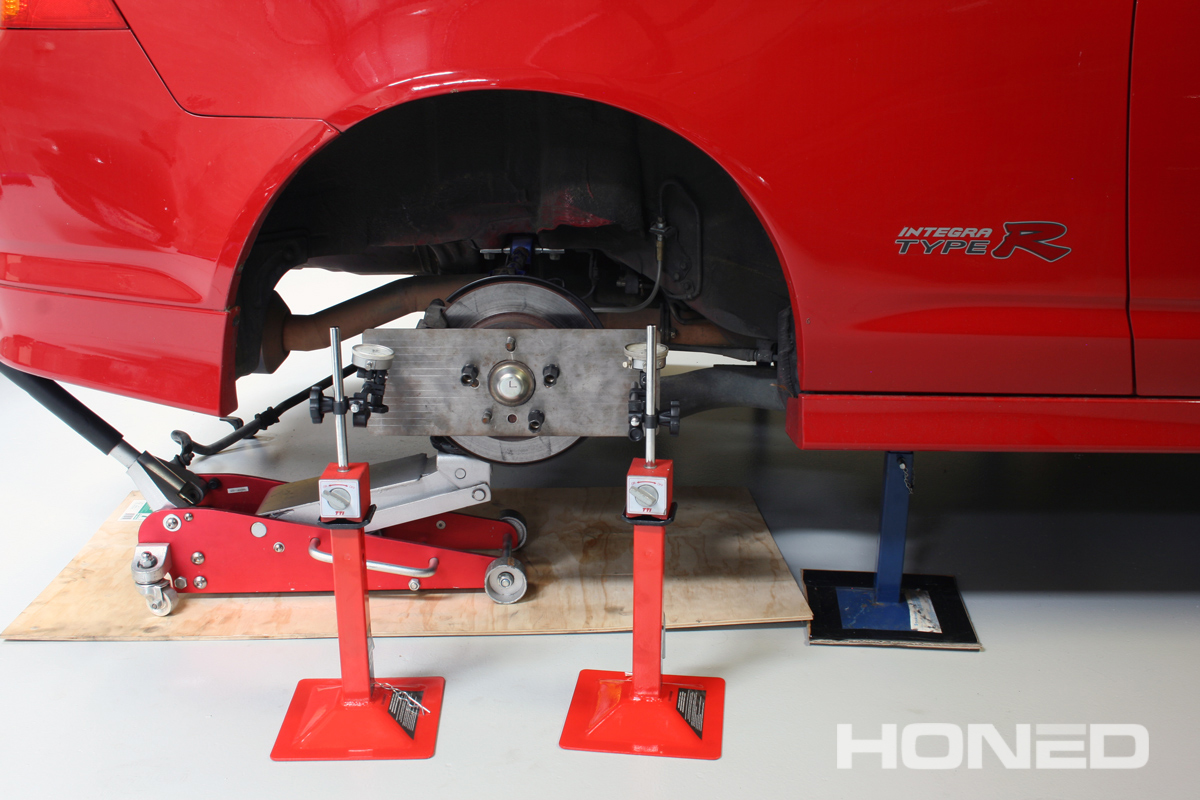
The resulting rear bumpsteer is graphed below. Since the rear trailing arm attaches to the suspension upright at two locations it provides all the toe control; Toe is defined by the arc the trailing arm travels through. The upper link only dictates camber and resists lateral cornering forces. The measured toe change is small through the whole travel, around 0.3mm per 10mm of bump travel. This is a good result because there’s not much that can be done here without re-designing the whole rear suspension.
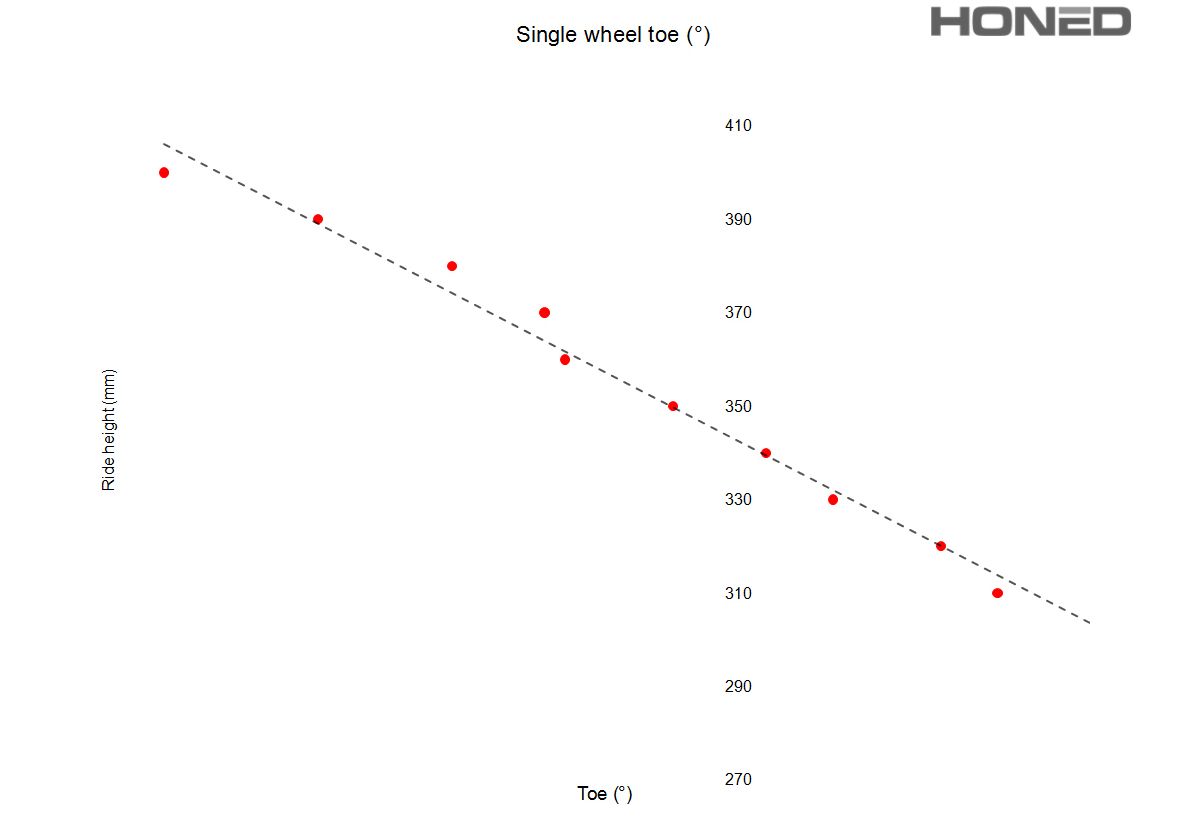
Things aren’t as ideal with the rear camber curve and motion ratio, the graph below shows the camber change. The large change in camber of the rear suspension in bump travel is clear, and the curve becomes more steep at the lower end of bump travel. Matching this large negative camber gain with a flawed front MacPherson strut design with minimal camber gain results in a tendency to understeer! That’s why a typical DC5 track setup has quite a lot of static front camber.
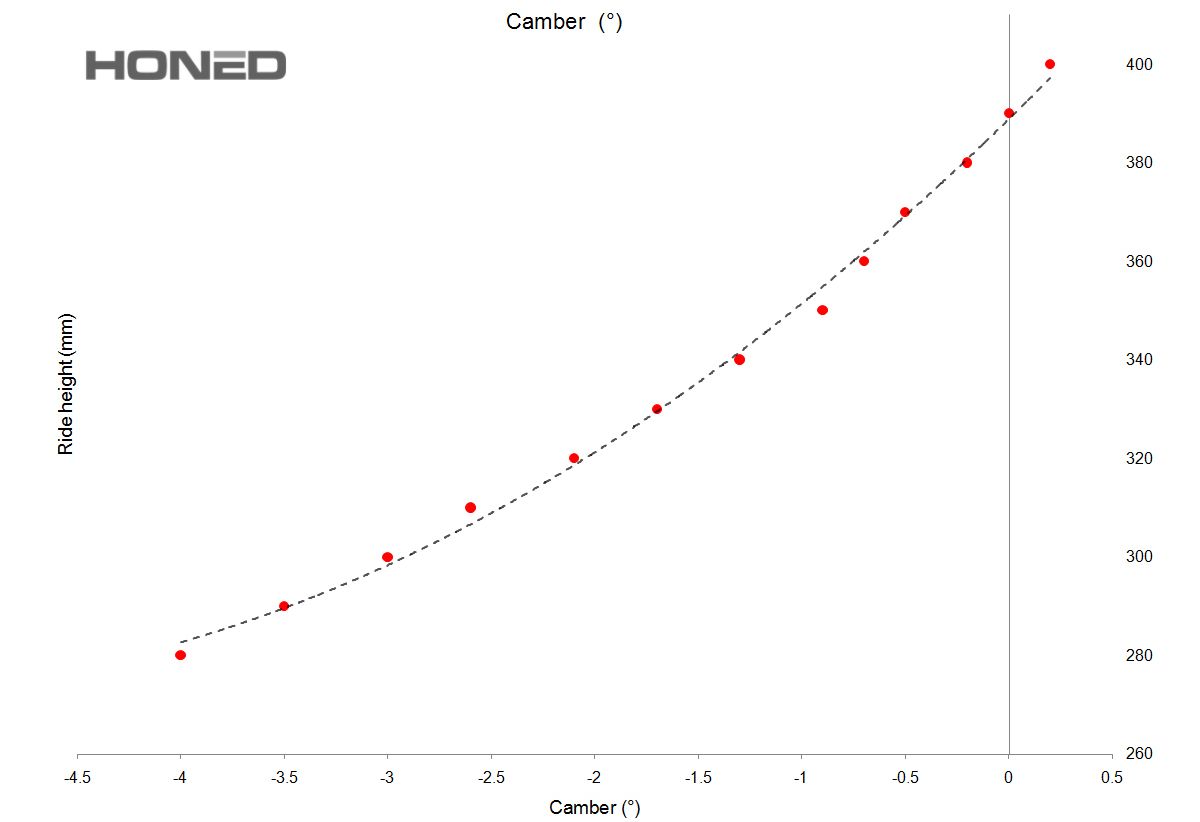
While we were cycling the suspension we measured the rear motion ratio: 0.48. This is much lower than ideal for good ride and damping, however again there’s not much that can be done without a substantial re-design.
Then we moved on to the front.
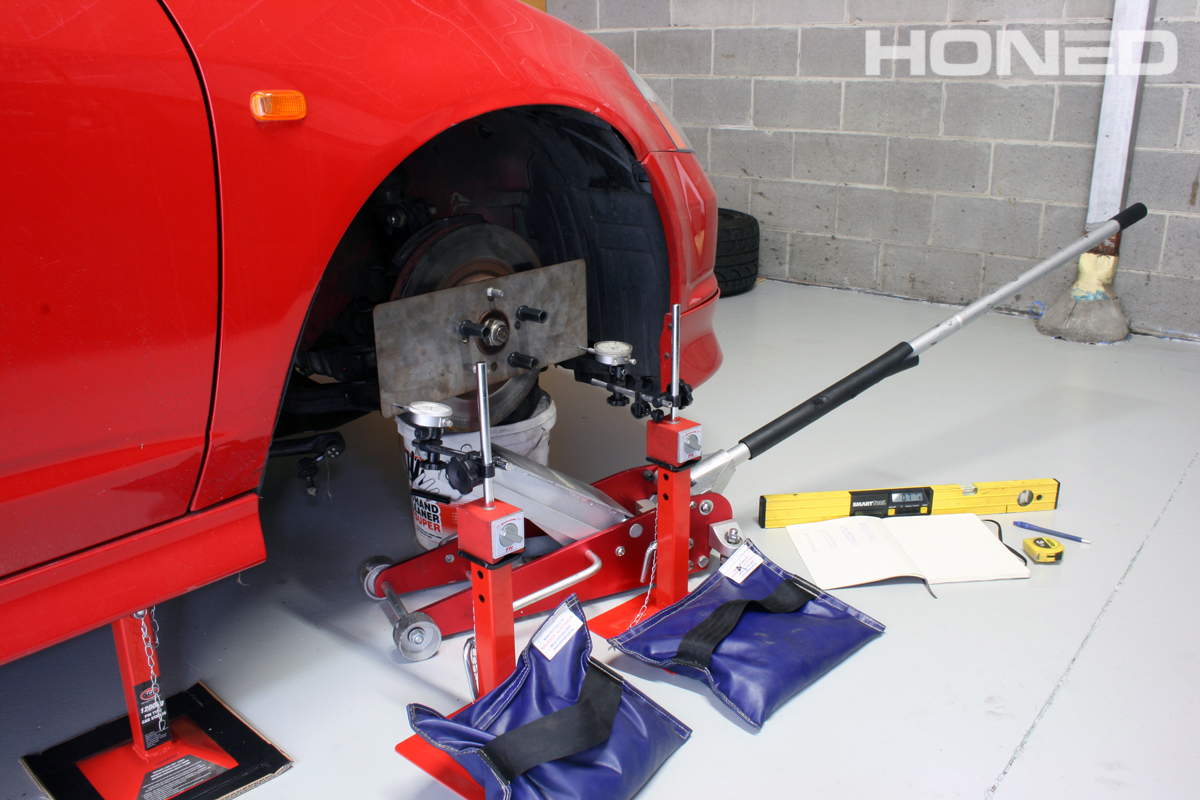
Below is the bump steer curve of the front:

The overall amount of toe change that the front end experiences is much more than the rear suspension. At a typical lowered ride height the toe changes up to 1.5 to 2mm per 10mm of bump travel. This is contributes to the poor steering feel and turn in that many DC5 and EP3 owners complain about, and with wide low offset wheels impacting the scrub radius the issue only gets worse. Based on these measurements we’ll focus on correcting the bump steer at the front end, which will make the car much more manageable.
From the data collected we’ve identified some clear areas where we can improve the DC5 chassis, and it’s certainly not the basket-case that people would have us believe. At the top of the list of changes will be a bumpsteer correction kit similar to our existing kits for 88-00 Hondas. First up we’ll be giving brakes and suspension a good freshen up, and the Mugen N1 shocks sent off for rebuild.
